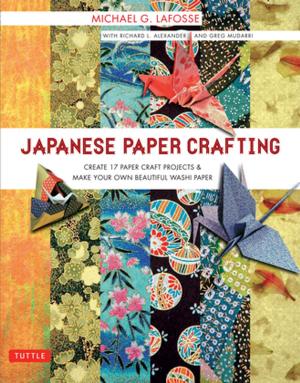Japanese Abacus Use & Theory
Nonfiction, Home & Garden, Antiques & Collectibles, Coins & Medals, History, Asian, Japan, Reference & Language, Education & Teaching, Teaching, Teaching Methods| Author: | Takashi Kojima | ISBN: | 9781462903849 |
| Publisher: | Tuttle Publishing | Publication: | July 17, 2012 |
| Imprint: | Tuttle Publishing | Language: | English |
| Author: | Takashi Kojima |
| ISBN: | 9781462903849 |
| Publisher: | Tuttle Publishing |
| Publication: | July 17, 2012 |
| Imprint: | Tuttle Publishing |
| Language: | English |
The Japanese Abacus & Theory book is easy to follow, and gives the reader step-by-step directions on how to use it correctly while applying it to practical use.
The imperfect numerical notation and scarcity of suitable writing materials in ancient times are presumed to have given rise to need for devices of mechanical calculation. While the definite origin of the abacus is obscure, there is some reason for believing that its earliest form reckoning table covered with sand or fine dust, in which figures were drawn with a stylus, to be erased with the figure when necessary. Though the Abacus is an older tool for calculation it still is used today in Japan taking on a different name called Soroban.
Though the Japanese Abacus or Soroban may appear mysterious or even primitive to those raised in the age of pocket calculators and desktop computers, this intriguing tool is capable of amazing speed and accuracy. It is still widely used throughout the shops and markets of Asia, and its popularity shows no sign of decline. Here for the first time in English is a complete explanation of how to use the abacus.
The Japanese Abacus & Theory book is easy to follow, and gives the reader step-by-step directions on how to use it correctly while applying it to practical use.
The imperfect numerical notation and scarcity of suitable writing materials in ancient times are presumed to have given rise to need for devices of mechanical calculation. While the definite origin of the abacus is obscure, there is some reason for believing that its earliest form reckoning table covered with sand or fine dust, in which figures were drawn with a stylus, to be erased with the figure when necessary. Though the Abacus is an older tool for calculation it still is used today in Japan taking on a different name called Soroban.
Though the Japanese Abacus or Soroban may appear mysterious or even primitive to those raised in the age of pocket calculators and desktop computers, this intriguing tool is capable of amazing speed and accuracy. It is still widely used throughout the shops and markets of Asia, and its popularity shows no sign of decline. Here for the first time in English is a complete explanation of how to use the abacus.















